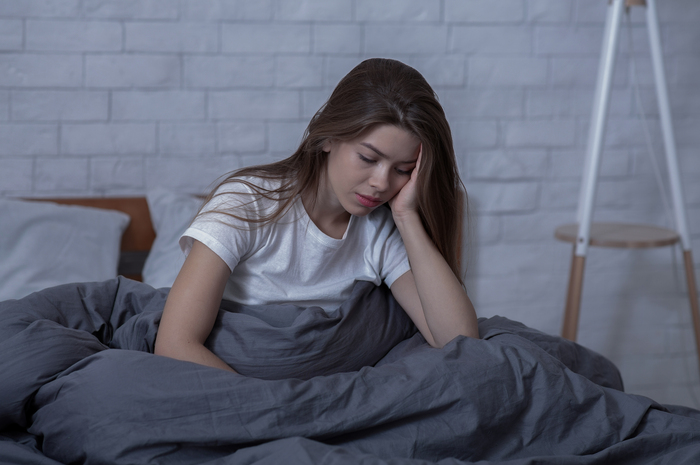What Is Seasonal Affective Disorder (SAD)?
Seasonal Affective Disorder (SAD) is a form of depression that follows a seasonal pattern, typically emerging during the fall and winter months when daylight hours are shorter. It is characterized by symptoms such as persistent sadness, low energy levels, difficulty concentrating, changes in sleep patterns, and alterations in appetite, often with a craving for carbohydrates, according to research.
Studies show that these symptoms can significantly impact daily functioning and overall well-being. While the exact cause of SAD is not fully understood, it is believed to be related to reduced sunlight exposure, which can disrupt the body's internal clock and lead to imbalances in serotonin and melatonin levels. According to the American Academy of Family Physicians (AAFP), treatment options for SAD include light therapy, medication, psychotherapy, and various self-care strategies aimed at managing and alleviating symptoms.
Seasonal Depression Symptoms
SAD manifests through a range of symptoms that can significantly affect an individual's daily life and emotional well-being, according to the AAFP. These symptoms typically begin in the late fall or early winter and subside during the sunnier days of spring and summer.
Recognizing these symptoms is crucial for seeking timely treatment and managing the disorder effectively. Below are some common symptoms associated with SAD:
-
Carbohydrate cravings and weight gain
-
Extreme fatigue and lack of energy
-
Feelings of hopelessness or worthlessness
-
Trouble concentrating
-
Decreased ability to focus
-
Oversleeping or difficulty waking up in the morning
-
Social withdrawal or isolation
-
Irritability or anxiety
-
Loss of interest in activities once enjoyed
-
Persistent sad, anxious, or "empty" mood
Causes and Risks Factors for SAD
Understanding the causes and risk factors of Seasonal Affective Disorder (SAD) can provide valuable insights into why certain individuals are more susceptible to this condition. While the exact cause of SAD is not fully understood, according to the National Institute of Mental Health. However, they note that several factors are believed to contribute to its development. These include biological, environmental, and genetic influences that disrupt the body's natural rhythms and chemical balances.
Below are some of the key causes and risk factors that they believe are associated with SAD:
-
Circadian rhythm: Reduced sunlight during the fall and winter months can disrupt the body's internal clock, or circadian rhythm, leading to feelings of depression and fatigue.
-
Serotonin levels: A drop in serotonin, a neurotransmitter that affects mood, may be triggered by decreased sunlight exposure, contributing to depression symptoms.
-
Melatonin levels: Changes in season can affect the balance of melatonin, a hormone that regulates sleep patterns and mood, potentially leading to increased feelings of lethargy and depression.
-
Family history: Individuals with a family history of SAD or other forms of depression may have a higher risk of developing the disorder, suggesting a genetic component.
-
Geographical location: Living far from the equator, where daylight hours are shorter in winter, can increase the likelihood of experiencing SAD due to reduced sunlight exposure.
Seasonal Affective Disorder Treatment
SAD involves a multifaceted approach aimed at alleviating symptoms and improving overall well-being. According to the American Academy of Psychology, effective treatment plans often combine medical interventions with lifestyle changes to address the various aspects of the disorder. They note that early diagnosis and treatment are crucial for managing SAD, as they can significantly reduce the impact of symptoms on daily life.
Therapies for Seasonal Affective Disorder
Therapies play a critical role in the treatment of Seasonal Affective Disorder, according to the National Alliance on Mental Illness (NAMI), by offering structured and evidence-based approaches to manage and mitigate symptoms. These therapies can be tailored to meet individual needs, making them versatile options for those affected by SAD.
Below are some commonly used therapies for treating this condition, according to NAMI:
-
Light therapy: This involves exposure to a special light box that mimics natural sunlight, helping to reset the body's internal clock and improve mood. Sessions typically last about 20-30 minutes each morning.
-
Psychotherapy: Also known as talk therapy, this treatment focuses on changing negative thought patterns and behaviors associated with SAD. Cognitive-behavioral therapy (CBT) is a particularly effective form of psychotherapy for this condition.
-
Medication: Antidepressants, particularly selective serotonin reuptake inhibitors (SSRIs), may be prescribed to help balance serotonin levels in the brain, alleviating symptoms of depression.
-
Vitamin D supplementation: Since reduced sunlight exposure can lead to vitamin D deficiency, supplements may be recommended to help improve mood and energy levels.
Medication for Seasonal Affective Disorder
NAMI notes that medication can be an essential component in the treatment plan for SAD, particularly for those whose symptoms are severe or do not respond adequately to other forms of therapy. Medications aim to correct the chemical imbalances in the brain that contribute to depressive symptoms, thereby improving mood, energy levels, and overall functioning.
Common medications used to treat SAD include:
-
Vitamin D: Since reduced sunlight exposure in the winter months can lead to a deficiency in vitamin D, supplementation can help improve mood and alleviate some symptoms of SAD.
-
Antidepressants: Selective serotonin reuptake inhibitors (SSRIs) such as fluoxetine (Prozac) and sertraline (Zoloft) are commonly prescribed to increase serotonin levels in the brain, which can help reduce symptoms of depression.
-
Bupropion (Wellbutrin): This atypical antidepressant is another option that can be particularly effective for SAD. It works by affecting the levels of norepinephrine and dopamine, two other neurotransmitters involved in mood regulation.
Self-Care and Prevention of Seasonal Affective Disorder
Self-care and preventive measures play a crucial role in managing and mitigating the symptoms of SAD, according to the AAFP. By incorporating healthy habits and lifestyle changes, individuals can reduce the impact of SAD and improve their overall well-being. These strategies not only help in coping with the disorder but also contribute to a more balanced and fulfilling life.
Some practical self-care actions that can be taken to prevent SAD and manage its symptoms effectively include:
-
Spend some time outside every day: Exposure to natural sunlight, even on cloudy days, can help regulate your circadian rhythm and improve mood.
-
Eat a well-balanced diet: Consuming a variety of nutrient-rich foods can help maintain energy levels and stabilize mood.
-
Exercise regularly: Physical activity can boost serotonin, endorphins, and other feel-good chemicals in the brain, helping to alleviate symptoms of depression.
-
Maintain a consistent sleep schedule: Going to bed and waking up at the same time every day can help regulate your body's internal clock and improve overall sleep quality.
-
Stay connected with loved ones: Social interaction and support can provide emotional comfort and reduce feelings of isolation and loneliness.
FAQs
What is Seasonal Affective Disorder (SAD)?
SAD is a type of depression that usually occurs during the fall and winter months when daylight hours are shorter.
What are the symptoms of Seasonal Affective Disorder?
Symptoms can include persistent feelings of sadness, low energy, changes in sleep patterns, and alterations in appetite.
How is Seasonal Affective Disorder treated?
Treatment options include light therapy, medication, psychotherapy, and various self-care strategies such as maintaining a consistent sleep schedule and staying connected with loved ones.
What causes Seasonal Affective Disorder?
While the exact cause is not fully understood, it is believed to be related to reduced sunlight exposure, which can disrupt the body's internal clock and lead to imbalances in serotonin and melatonin levels.
Can lifestyle changes help manage Seasonal Affective Disorder?
Yes, self-care strategies like spending time outside every day, eating a well-balanced diet, regular exercise, maintaining a consistent sleep schedule, and staying connected with loved ones can help manage SAD symptoms.
Can lifestyle changes help manage SAD?
Yes, lifestyle changes and self-care measures play a crucial role in managing and mitigating the symptoms of SAD. Healthy habits such as regular exercise, a balanced diet, and adequate sleep can help reduce the impact of SAD and improve overall well-being.
Can medication be used to treat SAD?
Yes, medication can be an essential component in the treatment plan for SAD, particularly for those whose symptoms are severe or do not respond adequately to other forms of therapy.
Are certain individuals more susceptible to SAD?
Yes, understanding the causes and risk factors of SAD can provide valuable insights into why certain individuals are more susceptible to this condition. However, the exact risk factors are still being studied.



